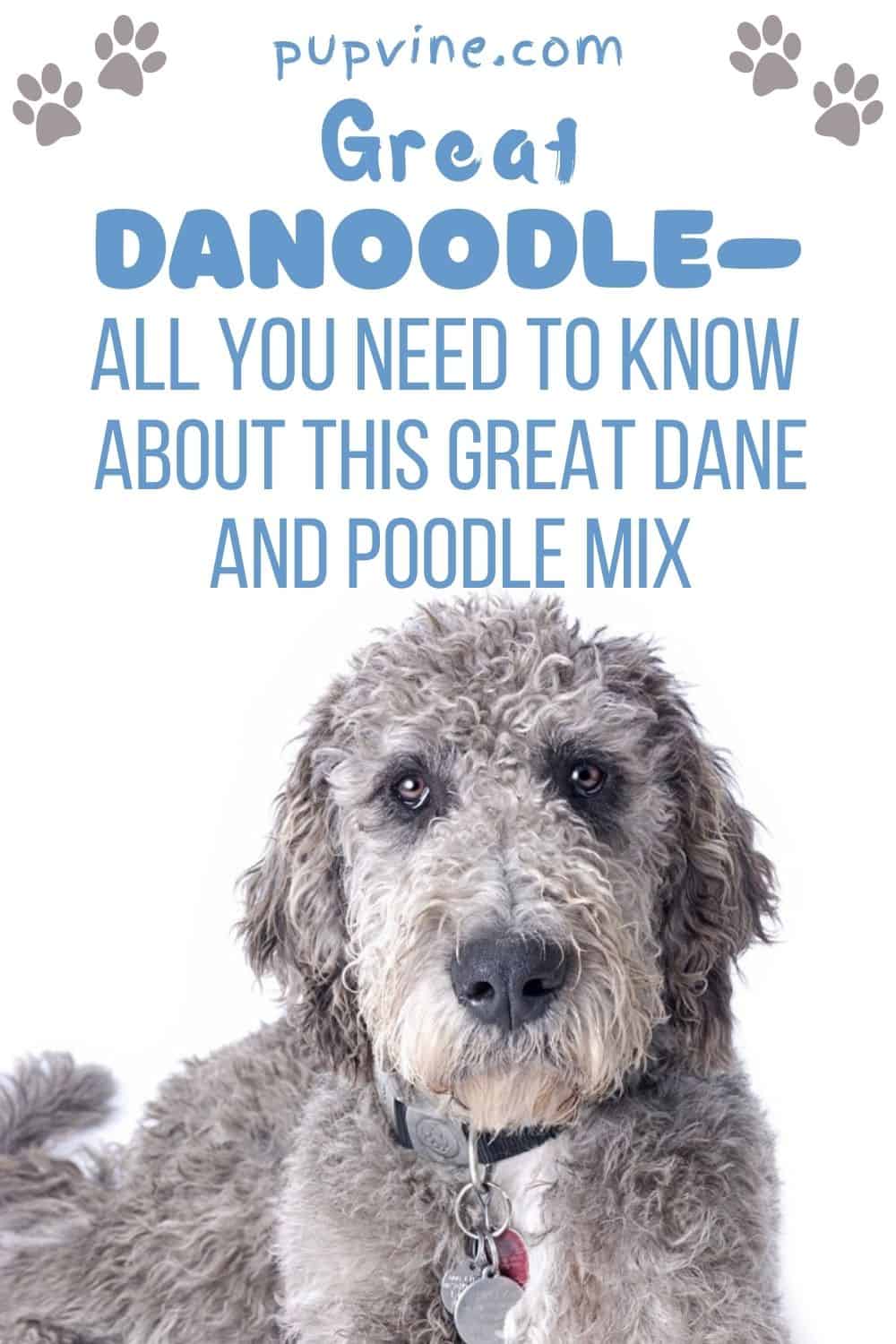Over the past few years, there have been more and more crossbreeds you can find at your local breeder. One of them is the Great Danoodle, the crossbreed of a Poodle and a Great Dane.
The Great Danoodle is yet another attempt for breeders to create a large hypoallergenic watch dog. This time, they tried creating a large, intelligent dog that would be suitable for allergy sufferers.
Did they succeed? Is the Great Danoodle a perfect hypoallergenic pup for dog lovers who adore large breeds, or will you be wasting your money on one?
Here’s what you need to know!
Overview
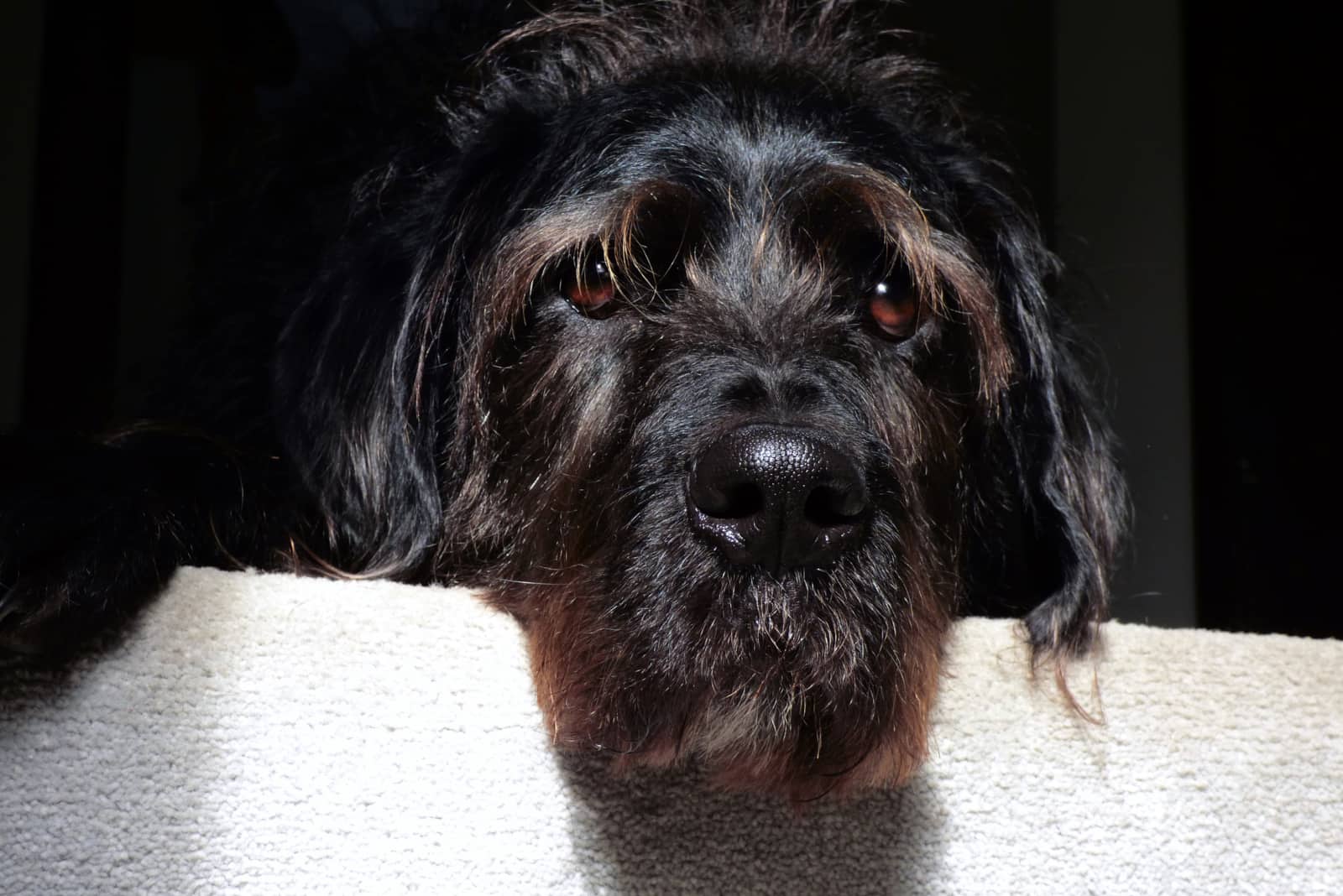
Great Danoodles, also known as Danedoodles or Great Danepoos, are the crossbreed of a purebred Great Dane and Standard Poodle. They make loyal, calm, and loving family pets that originated in the early 1900s.
Both Poodles and Danes are intelligent breeds, so the same can be expected of their offspring. Great Danoodles will love spending time with people and other pets, and they’ll require moderate daily activity.
These dogs grow to a height of between 22 and 27 inches and weigh 75 to 100 pounds. Their lifespan goes up to 13 years, so they can be with you for a long time, especially considering that most large breeds don’t live as long.
Their coats are dense and wavy, and they can vary greatly in color and length, depending on their parents’ genetics. Some might even have wiry coats!
They also come in many different colors, from solid varieties to even multi-color combinations, including white, black, blue, apricot, gray, cream, fawn, silver, red, and beige, with possible brindle, merle, and harlequin patterns and a black mask or markings.
Although this is one of the most well-known large hybrid dogs, the Great Danoodle isn’t common. Also, the American Kennel Club (AKC) doesn’t recognize it, as well as most other designer dogs and breeds.
Despite this, Danoodles are one of the most stable crossbreeds out there, especially if you’re looking to buy them from a reputable breeder. In fact, they are recognized by the Designer Breed Registry (DBR)!
Ancient Origins
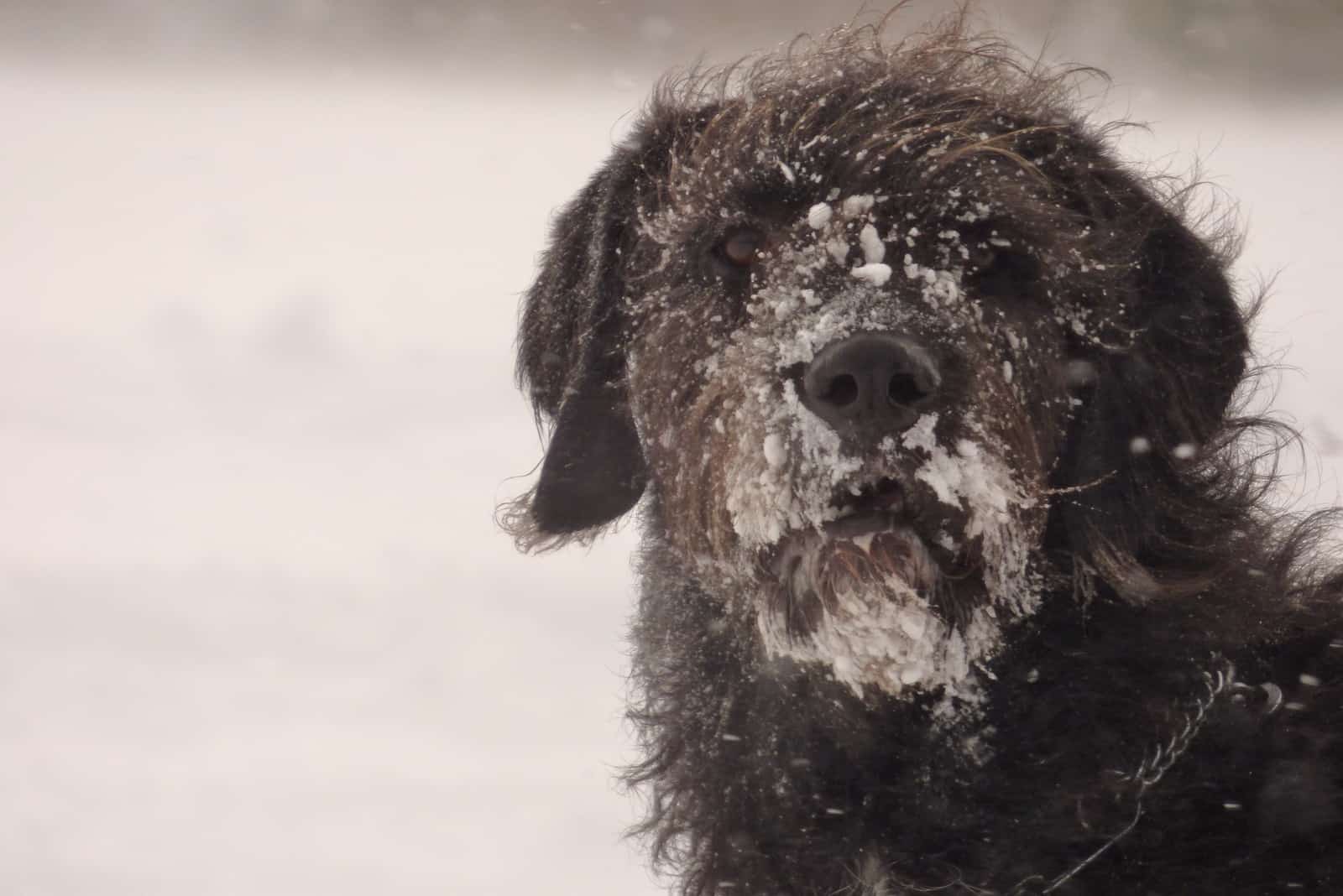
These mixed dogs have one of the oldest bloodlines of all the crossbreeds.
The Poodle was first mentioned more than four centuries ago, and you can find it in many Renaissance paintings. Keeping this in mind, it’s important to emphasize there are some notable differences in its modern appearance.
It is believed that the breed has existed for much longer. Despite it being known now as a spoiled lap dog with a somewhat funny hairstyle, Poodles were bred as hard-working sporting dogs, and they were commonly used for hunting waterfowls.
Despite this, Poodles weren’t a common sight in the USA until World War II, after which they quickly became one of the most popular dog breeds in this part of the world.
One of the reasons behind this is their colorful coat; Poodles can come in black, red, even phantom and parti!
The Great Dane has even more ancient origins – it is believed that these gentle giants existed around 3000 B.C! Drawings of these dogs were found in Babylonian temples. It is believed that the Assyrians brought these big dogs with floppy ears to the Romans and Greeks, who later spread the breed all over Europe, primarily Denmark.
As the years went by, the original Dane breed was mixed with the English Mastiff and the Irish Wolfhound to create the dog you know now.
This also led to many color possibilities in Great Danes, such as blue, black, red, and merle.
Like Poodles, they were also bred to be working dogs, which is the likely reason for their high intelligence. They were commonly used as guard dogs and hunting dogs. Some people even used them for hunting boars!
It is easy to see why combining these two hard-working breeds would result in a smart animal that would do everything it can to help with its owner’s everyday life.
Are These Dogs Suitable For Families?

Great Danedoodles make fantastic family pets. They are fairly calm, so they won’t make a huge mess inside the house despite their size. At the same time, they love being around people and are extremely loyal and easy to train.
They love their owners very much and trust them greatly. While there aren’t many differences in temperament between genders, females tend to be closer to their owners, while males are more independent – but all of this depends on the individual dog.
They are prone to separation anxiety since they are very social dogs that love constant interaction with humans. You shouldn’t leave them alone for longer than a few hours.
If you’re someone who travels a lot and doesn’t have enough time to dedicate to their pets, this might not be the best dog breed for you.
Also, since this breed is highly sociable, it will generally get along with other dogs. In fact, Great Danoodles can usually make friends with other animals, even cats. They aren’t aggressive, especially if you’ve spayed or neutered them, and love being in packs.
Actually, Great Danoodles will commonly love being in households with plenty of other animals, as this can help them play all the time.
As long as you socialize them from puppyhood, these pups can be friends with any animal you might have. They aren’t likely to express any aggression towards other animals, and despite their working dog ancestry, they won’t hunt smaller creatures.
Diet Requirements

Great Danoodles are big dogs. They have a reasonably large appetite that comes with their size. This means they will need plenty of dog food daily to maintain their health.
However, they are known to overeat, so you’ll need to monitor the amount of food they consume. They can become overweight quickly, which can ruin their quality of life.
Depending on the type of food you’re giving them, they typically require around four large cups of dry dog pellets per day.
High-quality dry pellets are good for more than one reason. For example, they can act as a toothbrush and prevent food buildup. This way, pellets will keep your dog’s breath fairly fresh and their teeth clean and healthy.
One of the most important nutrients for your pooch is essential fatty acids. These are great for their coats, nervous system, as well as most internal organs.
Just like other dogs, Great Danoodles also need plenty of protein, which will not only give them energy but also assist with their skin, bone, nail, and muscle structure. A canine’s body isn’t capable of storing protein – it needs to have a constant supply.
Carbohydrates are another source of energy for your pup. Since the Great Dane Poodle Mix is a large breed, they’ll need more carbohydrates than usual. While carbs aren’t an essential part of a dog’s diet, they are still important. Still, avoid carbohydrates like corn and wheat.
Your dog should get plenty of vitamins and minerals that will keep his immune system working properly.
When it comes to calories, this is where it gets tricky and where many owners make mistakes.
Most healthy adult dogs require around 30 calories per pound daily to keep them at a healthy weight. Of course, this number isn’t precise, and it depends on many factors such as the dog’s age, activity levels, and overall health.
The Great Danoodle is a breed with high energy levels. This means they need a bit more calories than most other dogs. If your dog is active, that number should be raised to be around 30–35 calories.
If your Great Danoodle is 100 pounds, your pooch should consume 3,000–3,500 calories daily to maintain a healthy weight. Just make sure you don’t go overboard. You don’t want to end up with an obese dog or risk bloating.
Also, you need to give your Danoodle constant access to fresh and clean water. This will keep them hydrated. If your dog isn’t fond of drinking water, add wet food to his diet.
Exercise Requirements
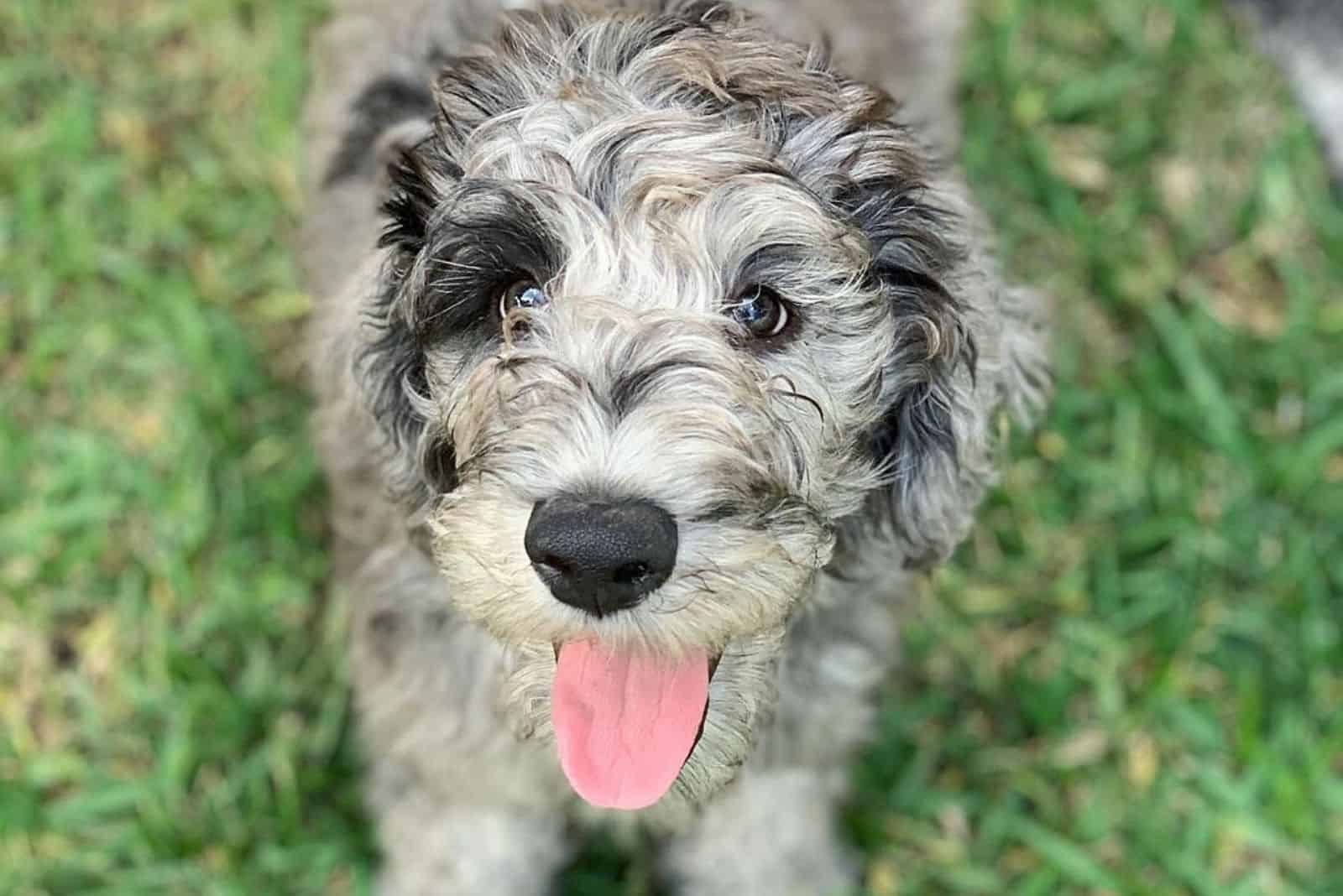
All dogs require regular exercise and walks. This is even more important with large dog breeds, such as the Great Danoodle.
The optimal length for daily walks should be 45 to 60 minutes, but you can adjust this a bit depending on the day.
Because of their large size, these dogs won’t do well in small apartments. They will feel most comfortable in homes with large yards, so they can freely run around whenever they feel like it. Still, considering their size, even big backyards aren’t replacements for regular walks.
Since these dogs are easy to train, they can get used to the leash quickly. If you train them properly, they will love to run next to you when you jog or ride a bike. Just be careful, as these dogs are strong, and they can easily knock an adult person over.
Keep in mind that playtime isn’t a replacement for exercise unless you’re playing fetch or a similar high-intensity game. The best exercise would be long walks or even running sessions. These can help Great Danoodles get rid of excess energy.
They also require plenty of mental stimulation. Make sure you play ball games with your pooch and buy him high-quality dog toys.
How Should You Train Your Great Danoodle?
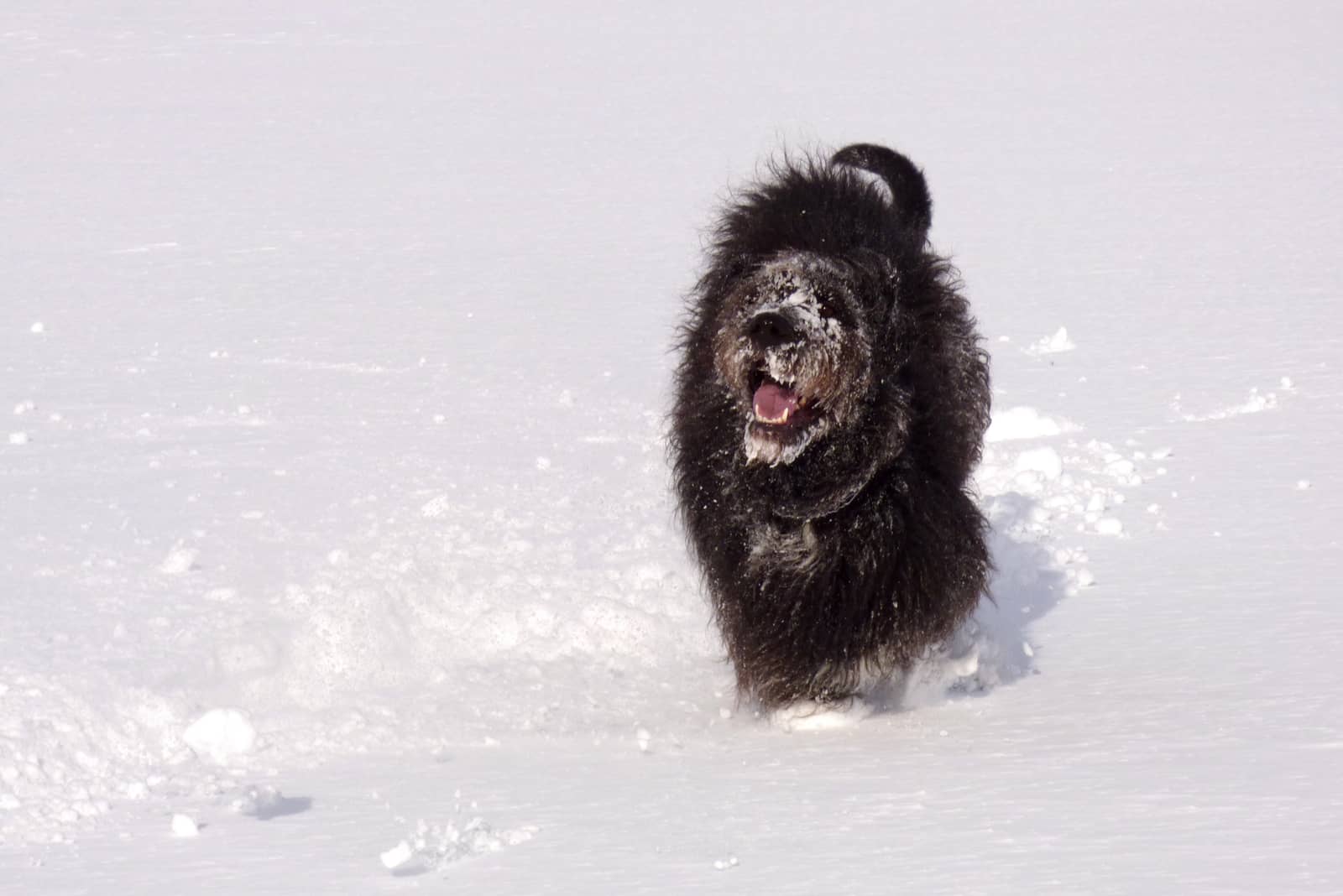
The Great Danoodle is an easily-trained breed. They are eager to please their owners, and this should be used as a training advantage.
Positive reinforcement works the best with intelligent dogs like this crossbreed. Since Danoodles are so loveable and calm, they will respond well to their owner’s commands.
Another good idea would be to use treats. In fact, treats are a great idea if you want to teach your pup any kind of trick. Just be patient and consistent. Poodles are commonly used in circuses because of their ability to learn tricks, and the Danoodle has the intelligence of their parent breed.
Female Great Danoodles mature earlier than males, so you can start training them much quicker. However, they can be somewhat moody and obstinate from time to time, while the males’ temperament is more consistent.
Both genders have their pros and cons, but one trait they share is their desire to please their owners.
Are Great Danoodles Hypoallergenic?

Great Danoodles have a wavy coat that varies in length. This also means that not all Great Danoodles have the same grooming needs.
But are they hypoallergenic?
Poodles are considered hypoallergenic dogs, so many breeders use them to create Poodle crossbreeds – commonly known as Doodles.
On the other hand, Great Danes aren’t considered great for people with allergies, despite their short fur.
This is because it isn’t dog hair causing you issues, but rather the dander, urine, and saliva, and Danes are famous for their drooling.
As for the Great Danoodles, whether or not they are hypoallergenic depends highly on the individual pup and its genetics. If the pup has more Poodle in it than Dane, there is a higher chance of the Great Danoodle puppy being hypoallergenic.
However, keep in mind that no dog is entirely hypoallergenic, as every dog produces dander, saliva, and urine to a certain amount. Still, Great Danoodles will cause fewer issues than many other dog breeds.
Health Issues
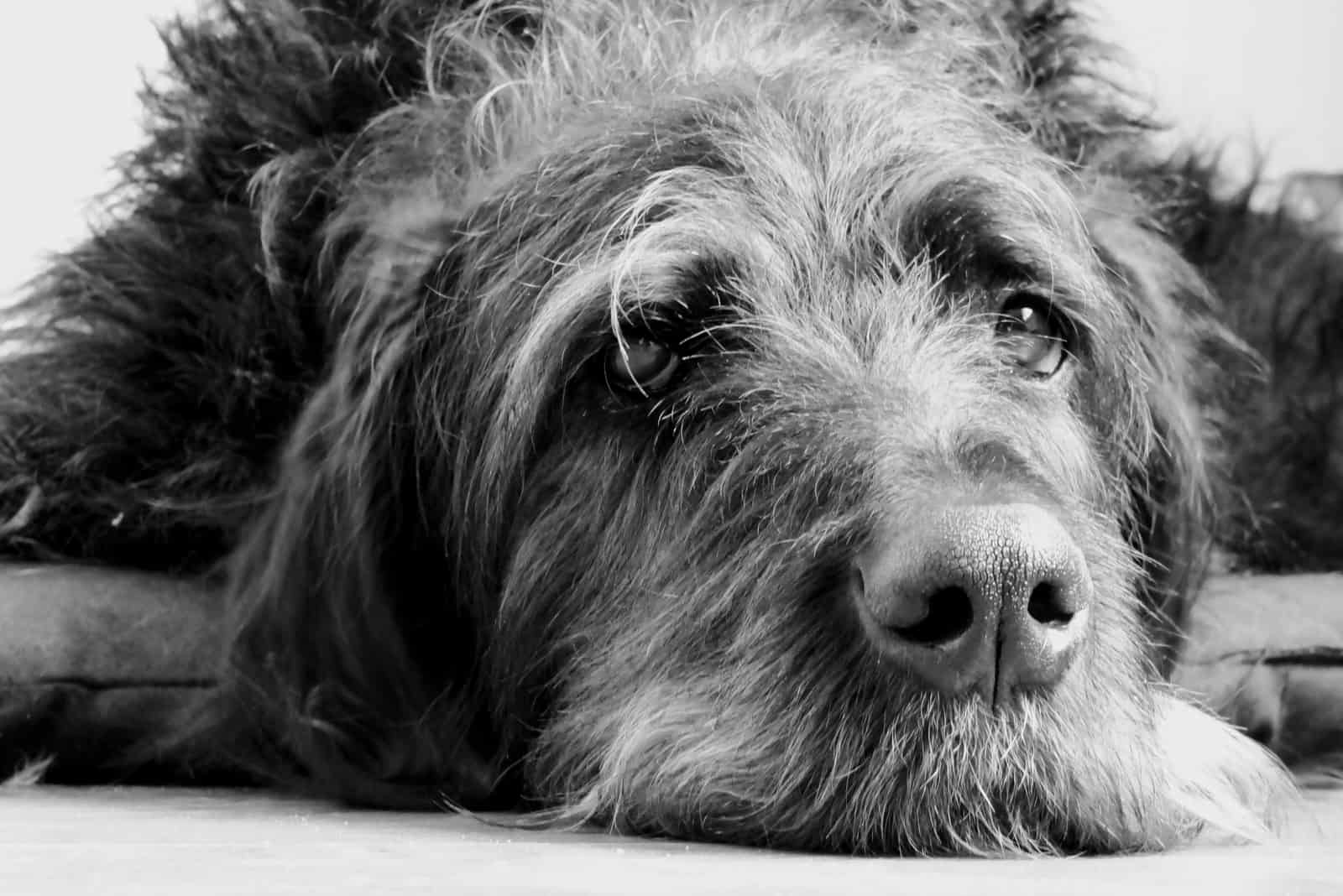
The Great Danoodle isn’t known to have any breed-specific health problems. However, just like with any designer breed, it can have any of the many issues their parent breeds may have.
A healthy lifestyle and a complete diet will go a long way to ensuring your pup has a long life. Another precautionary measure would be to get your puppy from a reputable breeder who conducts all necessary genetic testing of both parents and their offspring.
Crossbreeds tend to be more healthy than their parents because they have the advantage of hybrid vigor. Hybrid vigor means the offspring has genetic diversity, so the puppies are less prone to their parents’ genetic problems.
However, some health issues can occur.
Big dogs tend to have plenty of issues with their muscles and joints, so it is a good idea to take your pup to the vet regularly, especially if you have a senior dog.
Great Danes tend to suffer from cardiomyopathy or an enlarged heart. Some of their offspring can suffer from the same condition, even if the second parent is of another breed.
Other health problems Great Danoodles might face include:
• Addison’s disease
• Mitral valve disease
• Myotonia
• Hip dysplasia
• Corneal dystrophies
• Gastric torsion
• Epilepsy
• von Willebrand’s disease
• Patellar luxation
The best thing you can do for your pet is to take him to the vet once a year, even if you don’t suspect anything is wrong with them. Prevention is the key to keeping your pooch in a good healthy condition.
Great Dane Mixes
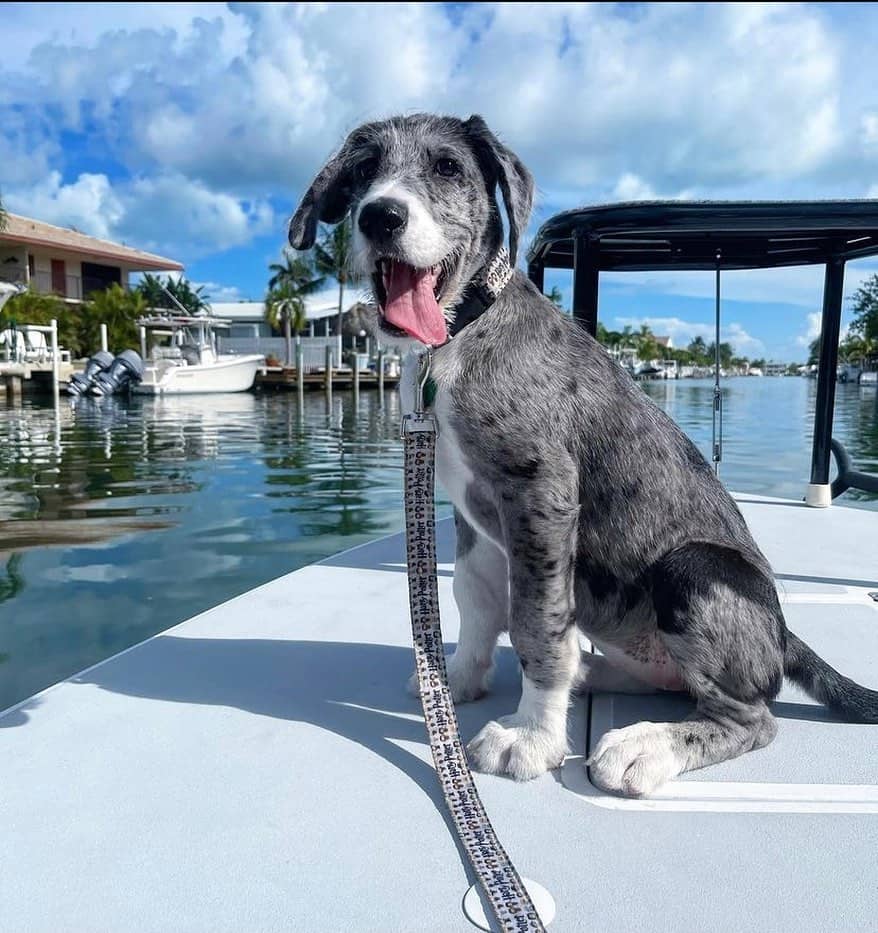
Photo from: @skiff.dog
While Great Danoodles can make amazing pets, so can many other Poodle and Great Dane mixes. If you like Great Danoodles, you might be interested in some other Great Dane mixes, such as:
• Cane Corso Great Dane mix
• Great Dane Husky mix
• Great Dane Chihuahua mix
• Corgi Great Dane mix
The Great Danoodle Puppies

Despite this being a recognized designer breed, Great Danoodle puppies can be somewhat difficult to find. These dogs are rare, and there aren’t many breeders that sell them.
You might want to check local shelters and pounds since many irresponsible dog owners abandon their dogs once they realize how large they are. However, you won’t commonly find puppies there.
If you’re looking for a breeder, do your homework and make sure they take good care of their dogs and do regular genetic screenings of their puppies. While Great Danoodles are generally healthy puppies, you still want to be entirely sure.
Also, keep in mind that these dogs grow up to be very large, so you need to be sure you can handle them. While they are suitable for first-time owners, they require a lot of space and plenty of exercise – not to mention that feeding them isn’t an easy task.
When it comes to the price, you need to look at the price of both its Great Dane and Poodle parent, as the crossbreed price will usually be within this range.
Still, if you have decided on this breed, you should know that these gentle giants make amazing family pets and loyal companions.
